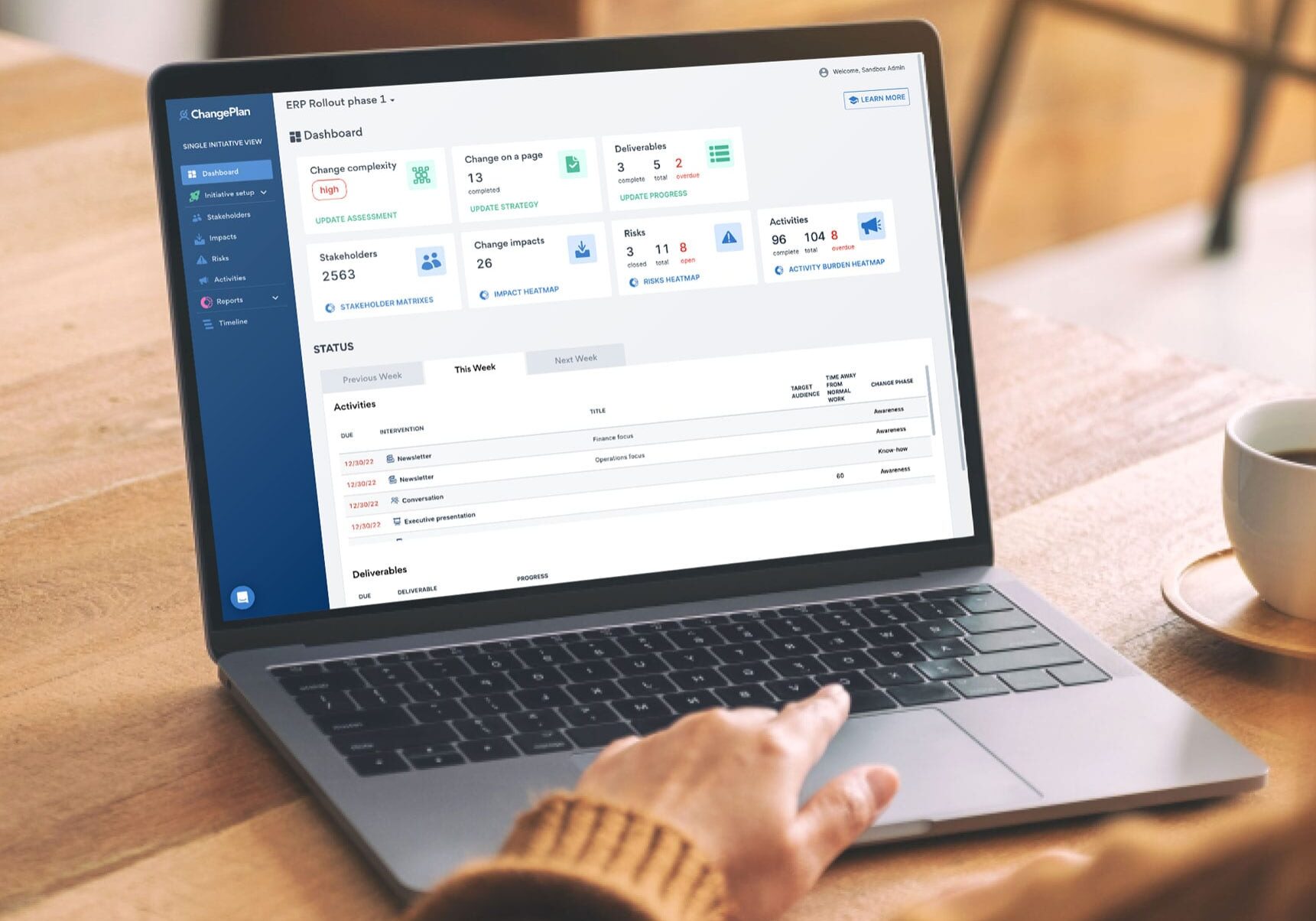Change professionals need to be prepared for anything!
We’re so busy working to coordinate our teams, engage stakeholders, coach leaders, deal with vendors and influence steercos. There’s a lot to deal with. We need to rely on our wits, skills, and above all, prep.
Here are your five crucial prep tips:
1. Don’t just lean in, dive in
Sadly we hear too many reports of Change Managers that are content to support projects that they have a merely adequate understanding of.
Restricting their knowledge of the project to a high-level overview, or just focusing on the ‘need-to-knows’ may be sufficient to enable the Change Manager to provide satisfactory change support for the project. However it will almost never permit that Change Manager to provide truly exceptional change support.
Great knowledge of a project is necessary but not sufficient for great change delivery.
If a change is very technical, Change Managers sometimes feel they don’t need to get involved with the system intricacies, because they can leave that to technical teams and SMEs. That will leave you in hot water further down the track.
Always begin with a crash course into the project. Wear a helmet if you feel the need. Ask questions. Make no assumptions. Don’t be afraid to ask stupid questions.
How far should you dive into the details?
We’re not suggesting you roll up your sleeves and start gathering the entire body of knowledge of your SMEs. Imagine trying to learn project detail such as Java programming, server load balancing and industrial relations law all in a year.
But… use the system, understand the process, become familiar with the acronyms, know what the pain points are and be 1000% clear on the differences in functionality between the ‘as-is’ and the ‘to to-be’.
One Change Manager shared this story with us:
I was working on an upgrade for an insurance claims system. I had a full-time system trainer in the team, so I thought that learning the new system was unimportant. That was a big mistake!
On a whim, I sat in on a training session for the new system. I could tell very quickly from the chatter and expressions that the users hated the new system. This was news to me!
It turned out that the new system wisely limited users’ ability to deviate from formal processes, something they had been able to easily do with the legacy system.
As soon as I learned this, I knew that my next step was to put much bigger emphasis on communicating the ‘Why?’. Those deviations were causing enormous financial, legal and reputational risk. Next time I’ll be sure to attend the training first!
To have quality conversations with impacted users, you must know as much as possible about their journey. You must have credible fluency with their situation and needs.
There will always be knowledge gaps and need to partner with SMEs (occasionally pestering them). Take your knowledge obligations seriously.
Don’t lean in. Dive in! You’ll likely live and breathe this project for at least six months.
2. Create a change canvas
A change canvas, a change on a page or a playbook are fantastic ways to systematize the collection of the high level details about a project and the change.
Think of this as the scaffold for your understanding of what you’re working to achieve. Aim to create an artefact that helps shape your initial discussions. List the project vision, success metrics, strategy, high-level impacts and initial thoughts on training and communications.
Don’t be embarrased to show stakeholders your canvas if there are still gaps in it. It shows your stakeholders that their input, insights and help is valuable, and will shape the plan.
ChangePlan’s in-build change canvas feature is designed to be the central place that gives you this clear, coherent reference document to share with those whose collaboration is valued. And, it can export to PDF and soon PowerPoint too.
3. Stay curious and ask a lot of questions
To create the best delivery plan, you must ask your stakeholders questions to help you create the best customer journey. Start with standard questions. How many impacted users require training? What is the appetite for this change?
But don’t stop there. A skilled Change Manager will ask more.
- How does your team prefer to receive communications?
- Are there any blackout dates that we should observe?
- How recent was the last change that the team experienced? How did it go?
- What did the team like and dislike about the way previous changes were delivered?
- Should I be speaking with anyone else in your team?
- Is there anything else I should know that will help me to support your team?
Ask questions that drive outcomes.
ChangePlan has places to record all these details, tracking blackout dates, stakeholder communication preferences, monitoring potential change collisions and portfolio timelines.
4. Get the bigger picture
Avoid working in a silo. Always investigate other changes happening in the organization. With an enterprise system, this is easier; if there is a community or practice, that’s an excellent place to start, but you need to know what other changes users need to navigate as you roll out your change. As well as impacting timing to avoid overloading users with change, you also have an opportunity to partner and consolidate.
Collaborating with other change managers instead of sending multiple update emails could consolidate the information into one weekly bulletin. Instead of creating numerous learning modules or webinars, it could save time if you partnered on delivery. Of course, you need to be careful not to dilute messages and confuse users, but knowing what else is happening in your organization gives you the power to decide.
Allowing Change Managers to easily identify the impact of neighboring projects on common stakeholder groups and see bottlenecks and opportunities for combining activities is something we’ve worked hard on within our platform ChangePlan.
5. Keep your finger on the pulse
Sadly, working from home and hybrid working has killed ‘watercooler conversations’. The quick hallway “How’s it going?” was a hugely valuable tool for the perceptive Change Manager, who would quickly sniff out discontent and follow up with a well-timed check-in.
Find other ways to check the pulse of the change.
Police have community informants to help them gain visibility of what’s happening on the street when they can’t be there. (Have you watched HBO’s ‘The Wire‘?) Use this approach. Find trustworthy allies among your stakeholder groups who will tell you the hard truth about how things are being received.
Don’t stop there though! You must check in regularly with stakeholders to keep on track. Hit people up with quick Teams messages, or scheduling automated pulse checks in ChangePlan.
ChangePlan supports Change Managers to have the right conversations by giving you structure and spaces to store the data you capture. Digital mentoring helps prompt what to do next. If your team hasn’t seen ChangePlan yet, book your demo here.











